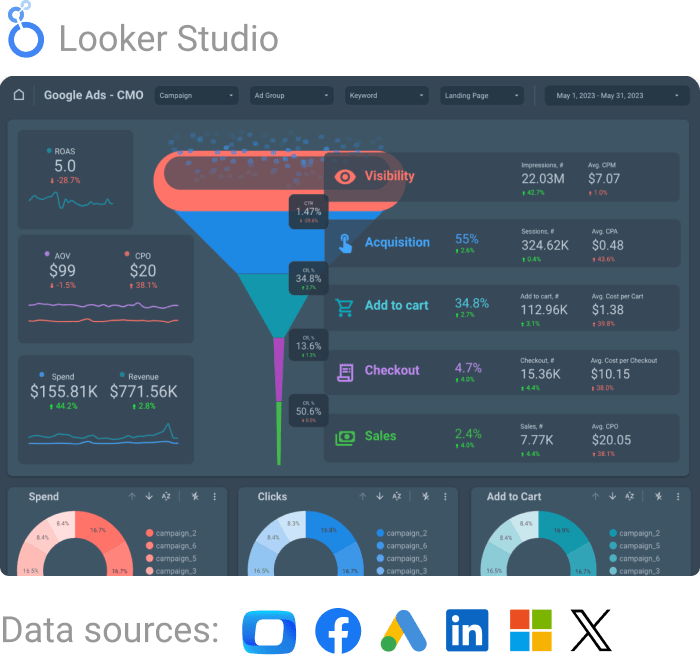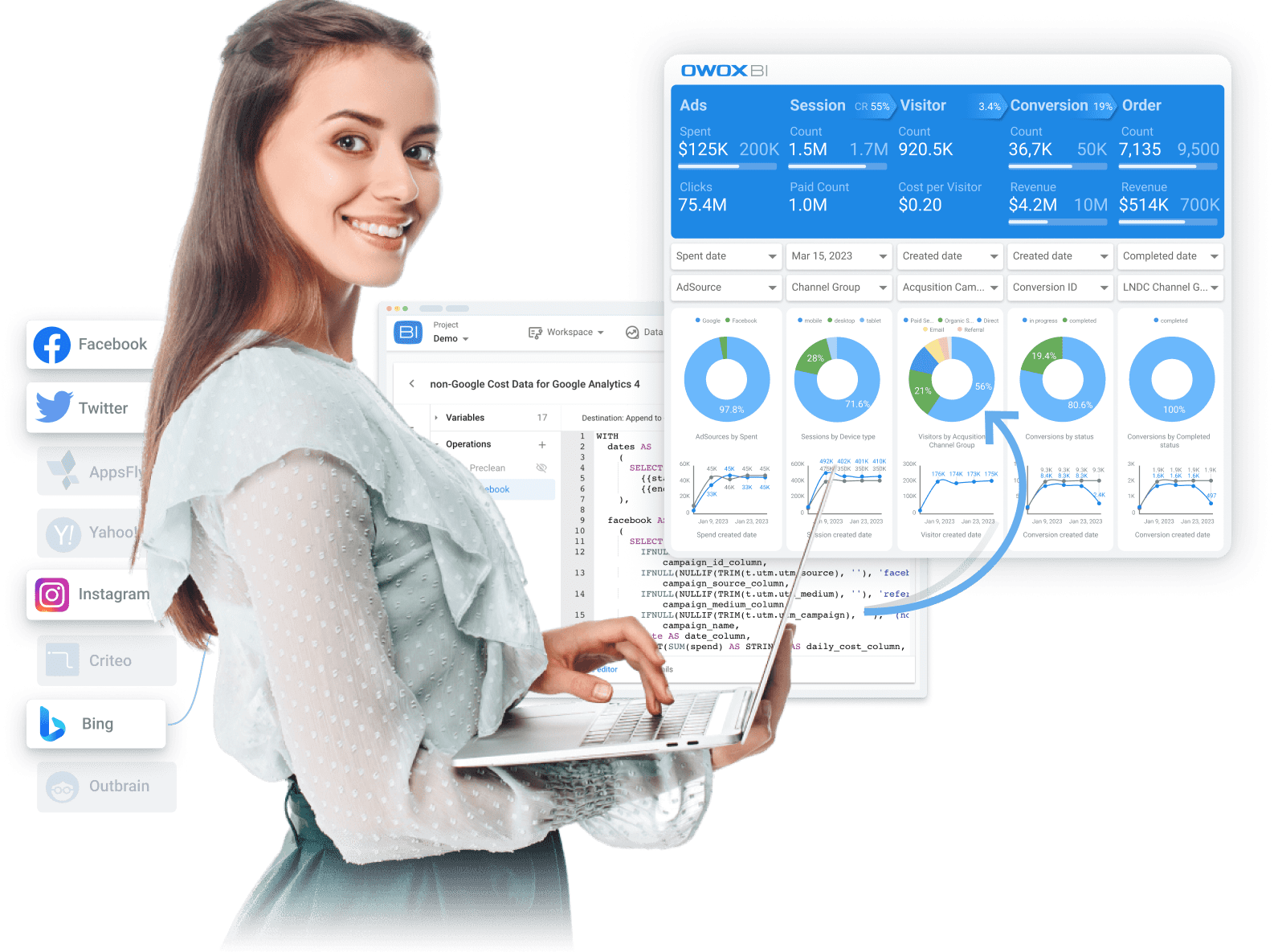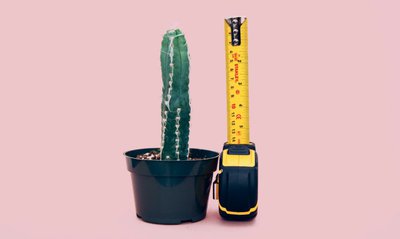Top 6 Strategies to Maximize Your ROAS for Social Media Ads
Masha Efy, Creative Writer @ OWOX
In 2023, companies are going to spend around $207 billion on social media ads, which is 10% more than the year before. However, nearly 6 in 10 advertisers feel they're not getting enough return.
In this article, we will suggest tips and strategies for improving your social media ad performance so that you get the most value from your advertising budget.
Why Should You Advertise on Social Media?
Running ads is not just about spending money on marketing but making smart investments that grow your business. Let's dive into why social media advertising is a game-changer for companies.
Get More Clients
Advertising on social media helps businesses tap into a vast pool of potential clients. Facebook and Instagram allow targeted ads, ensuring content reaches the right audience. Additionally, thanks to active communication, offering special deals, and collecting feedback, companies can foster loyalty and boost Customer Lifetime Value (LTV).
Communicating with customers makes them feel important, come back, and advocate for the brand, bringing in more sales.
Improve Lead Generation
Advertising on social media is great for getting new leads. Facebook ad campaigns are specifically designed to collect potential customer details. For example, a fitness brand can run an ad showcasing a new workout program, prompting users to sign up for a discount.
When people click on the ad and give their details, you get new leads. What makes social media stand out is its cost-effectiveness: often, the cost per lead on social platforms is lower compared to traditional advertising channels, allowing businesses to gather more leads for the same budget.
Increase Website Traffic
According to this poll, "90% of marketers say their social marketing efforts have increased exposure for their business, and 75% say they’ve increased traffic." As people scroll through their social feeds and see these ads, a simple click takes them straight to the company's site.
This seamless transition from seeing an ad to visiting a website not only introduces potential customers to the brand but can also lead to immediate sales or further exploration of what the company offers.
Enhance Audience Engagement
Engaging an audience on social media isn't just about posting; it's about promoting two-way communication. You can create interactive content, such as polls and challenges, that encourage active participation. Being responsive to comments and messages makes audiences feel valued and heard, building trust.
Many brands also promote user-generated content, sharing stories or photos from customers, which strengthens community ties. By consistently offering educational, tailored content and analyzing engagement metrics, companies can continuously adapt and resonate more deeply with their audience.
Increase Brand Awareness
Companies use social media to boost brand awareness by making posts that strike a chord with their audience and using influencer collaborations to tap into broader groups. However, among the various methods, paid ads stand out as especially effective. These well-targeted ads increase a brand's visibility even beyond its existing followers, ensuring the brand message reaches those most likely to be interested.
Without paid advertising, posts might only reach your existing followers and perhaps a few of the followers' connections. However, with a paid ad campaign, they could target people who've recently searched for similar items online, are within your shipping region, and have shown interest in similar brands. If you set aside a budget of, let's say, $100, the ad platform will distribute the ad to reach potentially thousands of these targeted users, vastly increasing the visibility of the store.
How to Calculate Social Media Ads ROAS
ROAS stands for Return on Ad Spend and is a crucial metric in advertising.
ROAS measures how much revenue you earn for every dollar spent on ads.
ROAS = Revenue from Ad Campaign / Cost of Ad Campaign
Example:
Let's say that you spent $1,000 on a Facebook ad campaign and made $5,000 in sales.
Using the formula, your ROAS would be:
ROAS = $5,000 / $1,000 = 5
This means you earned $5 for every dollar you spent on the campaign.
What Is Considered a Good ROAS for Social Media Ads
A good ROAS is relative and can vary by industry, market, and business model. However, a general benchmark is that a ROAS ratio of 4:1 or higher is considered strong for most businesses. It means that for every $1 spent on advertising, the company is getting $4 in return.
But it's also good to look at other factors. If the profit margin is slim on the product or service being advertised, then even a 4:1 ROAS might not be sufficient. Each business should determine its ideal ROAS based on costs, profit margins, and growth strategies.
Or if you are in the coaching business, then even 1.1:1 ROAS (meaning you get just slightly more than you spend) might work well for you.
If you want to learn more about your users with relevant metrics, we recommend reading our article about metrics and dimensions you may find in Google Analytics.

CMO Dashboard
Download templateTop 6 Strategies to Improve Your Social Media Advertising ROAS
Improving ROAS isn't a matter of pure luck. It involves strategic planning, testing, monitoring, and continuous optimization. Here are some strategies for getting higher ROAS:
Strategy 1: Create a High-Converting Landing Page
Image idea: Split screen - One side shows a dull landing page with a "declining graph" icon, and the other side showcases a vibrant landing page with an "upward-pointing graph" icon.
When it comes to advertising, a well-designed ad creative can be the pivotal factor that makes a campaign successful. Let's dive into the main components:
1. Offer: This is the heart of your ad.
Think about what you're giving to the potential customer. Is it a discount, a limited-time promotion, or maybe a free trial? Make sure it's catchy and clear.
2. Copy: The words you choose carry weight.
Your ad copy should be concise, clear, and compelling. Don't use jargon and be informative; always include a clear call-to-action (CTA).
3. Page Layout and Design
A cluttered ad can confuse and deter potential customers. Use whitespace effectively, ensure your fonts and colors are legible and consistent with your brand, and place the most crucial information or offer prominently.
Follow the 'Z' or 'F' pattern. People tend to scan pages in these patterns, so placing key elements along these lines can enhance visibility.
Strategy 2: Employ Continuous Creative & Copy Testing
Image idea: show seasons, and add dotted lines or curves showing the trend changes from one season to the next, e.g., sales growth from spring leading to a peak in summer, then a decline in fall, stabilizing or further declining in winter.
As seasons change, cultural trends shift, and global events happen, the ad content that resonates most with audiences will change too. By refining what works best, you ensure that your advertising budget is spent more efficiently, yielding a better return on investment. Testing also provides insights into what your audience prefers, and dislikes, and how they engage with various content types.
1. Testing Images:
Visuals are the first thing that captures the attention. An image that resonates can make a substantial difference in click-through rates.
Approach: Cycle through various images – from product shots to lifestyle images or user-generated content. Check which ones resonate best with your audience.
2. Testing Videos:
Videos can tell a compelling story in just a few seconds, making them incredibly effective, especially on platforms like TikTok, Instagram, and Facebook.
Approach: Test different video lengths, styles (e.g., animations, testimonials, how-to videos), and calls-to-action to determine which grabs and retains viewer attention the best.
Experiment with varying tones (humorous, urgent, laid-back), structures (question vs. statement), or perspectives (first-person vs. third-person). Monitor which ones drive more conversions and engagements.
Advice for Better Ad Creatives
- Use Emojis: Emojis can make your ad feel more relaxed and approachable, but don't overdo it.
- Testimonials: A short, powerful testimonial can boost credibility instantly.
- Consistent Branding: Ensure that your ad design aligns with your brand's colors, fonts, and overall style. This consistency builds trust and improves recognition.
- Interactive Elements: If the platform allows, use elements like sliders, videos, or interactive polls. These can increase engagement and set your ad apart.
Strategy 3: Experiment with Your Audience Targeting to Scale Your Ads
Crafting the perfect ad is only half the battle; ensuring it reaches the right eye completes the circle. By experimenting with audience targeting, you can fine-tune your reach and scale your ads more effectively.
Age
Different age groups have distinct preferences, buying habits, and online behaviors.
Segment your campaigns by age brackets. An ad targeting millennials might have a different tone and offer than one aimed at baby boomers.
Location
Geographical relevance can highly influence purchase decisions, that's why you should use geo-targeting. For instance, if you're promoting winter wear, targeting colder regions can work better.
Interests
Connecting your product or service with a person's interests increases its relevancy. For instance, Facebook allows you to target users based on their hobbies, pages they've liked, and more. If you're selling camping gear, target users interested in hiking or outdoor activities.
Ad Placement
Test various placements like news feeds, sidebars, or stories. Sometimes a lesser-used placement offers better ROI due to lower competition.
Bidding Strategy
Experiment between automated and manual bidding. While automated bidding lets the platform decide the best bid amount, manual bidding gives you more control, especially if you have insights into when your audience is most active.
Lookalike Audiences
Facebook analyzes your current audience and then targets users with similar profiles. If your existing audience is converting well, this can be a gold mine.
Strategy 4: Make Data-Driven Approach Your Top Priority
While intuition is important, data will provide you with much more clarity. Analyzing the numbers offers a direct view of what's effective and what isn't.
Consider the following recommendations:
Use analytics tools. Google Analytics, Facebook Insights, and others provide comprehensive data about audience behaviors, conversions, and engagements.
Set Clear KPIs: Knowing your KPIs will help you understand which metrics truly matter to your business objectives. Whether it's click-through rates, conversion rates, or time spent on a page, hone in on what drives your success.
Continuous Learning: Encourage teams to participate in trainings or workshops regularly. The better your team is at reading and understanding the data, the more effective your campaigns will be.
Test: By experimenting with different variables and measuring results, you can improve strategies with precision.
Stay Updated: Algorithms change, user behaviors shift, and new platforms emerge. Regularly update your data-driven strategies to account for these changes.
Strategy 5: Explore Issues That Are Indirectly Related to Your Ads
When assessing the effect of your social media advertisements, it's common to evaluate the ads themselves — the creative, the copy, the placement. However, several indirect factors can influence your ads' performance, even if they aren't obvious:
Website and Landing Page Experience: An ad can drive traffic, but if your website or landing page is slow to load, not mobile-friendly, or has a confusing user interface, potential customers might leave before making a conversion.
Product Pricing and Perceived Value: If competitors offer similar products at more attractive prices or if your product doesn't offer clear value, even the most well-crafted ads might fall flat. Regularly assess market trends and ensure your offerings are competitively priced and bring benefits to consumers.
Customer Reviews and Reputation: Before making a purchase, many will look for reviews or seek opinions on social media. If your product has numerous negative reviews or negative chatter about your brand, it can impact the effectiveness of your ads. However, addressing concerns, engaging with feedback, and promoting positive customer relationships can make a big difference.
Check-out Process: An overly complicated check-out process can ruin the whole experience, no matter how convincing your ad might be.
Support After the Purchase: Make sure you have helpful customer service, return policies, and post-purchase support, as they will be the core of your brand's reputation.
Strategy 6: Lower the Cost of Creating Your Social Media Advertising
These steps will help you lower the costs of your ads:
- Firstly, analyze campaign performance to refine your strategies, and make sure you aren't spending budget on ineffective campaigns.
- User-generated content, like customer testimonials or photos, can cut down on expensive production fees.
- Using in-platform tools for ad design, like Facebook's Ad Creator, eliminates the need for pricey software.
- Lastly, re-purposing high-performing content across platforms maximizes reach without added costs.
Analyzing Blended ROAS for Social Media Ads with OWOX BI
By merging data from all your advertising sources with your sales results, OWOX BI offers a unified view of your ad performance. After data collection, the platform creates an integrated data model. It maps different metrics and attributes from disparate systems into a standardized format. So, regardless of the source or the metric's naming convention, OWOX BI ensures consistency.
This means more informed decisions and strategies that resonate with your overall business goals. When it comes to social media ads, OWOX BI's insights can highlight which platforms or campaigns offer the best bang for your buck, allowing for efficient resource allocation and optimized outcomes.
Ready to elevate your advertising strategy with blended ROAS insights?
FAQ
-
What is Facebook ROAS & how does it work?
Facebook ROAS is a metric that stands for Return on Ad Spend, specifically within the Facebook Ads platform. It calculates the revenue generated for every dollar spent on Facebook Ads. -
Can Facebook Ads Improve Your ROAS?
Absolutely. Facebook's targeting options allow businesses to reach a specific audience based on demographics, interests, and behaviors. With these features, combined with compelling ad creatives and a clear call-to-action, businesses can drive conversions and enhance their return on investment. It's essential to monitor and optimize your campaigns continuously to ensure the best results. -
How do you improve ad relevance & increase ROAS?
Improving ad relevance is about making sure your ads resonate with your target audience. This involves understanding your audience's needs, fine-tuning your ad copy, and using high-quality, relevant visuals. Regularly testing and optimizing your ad creatives, headlines, and call-to-actions can also boost relevance.











